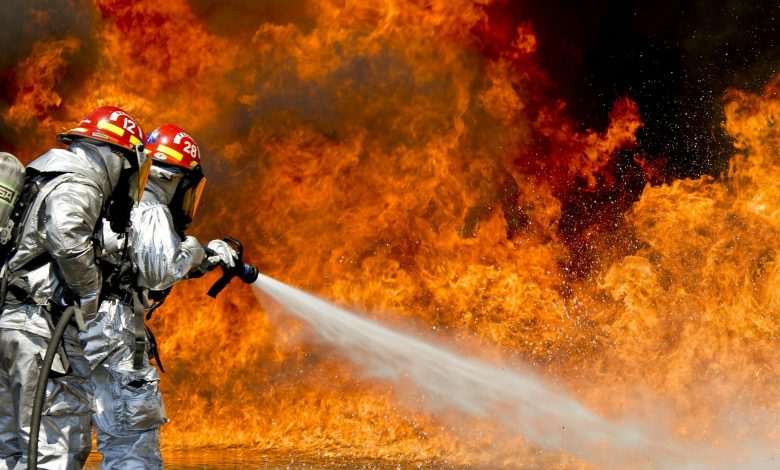Improvements in Firefighting Practices to Address Health and Environmental Concerns

Firefighting techniques have evolved over the years, with firefighters using water, foam, helmets, gloves, firefighter SCBA, etc to fight fires. These practices were used to extinguish fire and protect the public and properties.
Unfortunately, despite their benefits, these traditional firefighting practices have been the reasons for serious health issues. Additionally, some firefighting agents and their by-products are also harmful to the environment.
In this article, we will look at the recent improvements in firefighting practices and the environmental impact of traditional firefighting practices.
Health Risks Associated with Firefighting
Firefighters, often recognized and praised for their bravery, must fight against all odds and put their lives at risk. Sadly, that’s the nature of their profession.
The physical demands of their job along with the exposure to toxic substances make the situation even worse.
Out of all the health risks, one of the most concerning ones is the inhalation of harmful substances. The harmful substances could be anything ranging from smoke and fumes to dust particles released during fires.
This exposure could lead to health issues like respiratory problems, which include asthma, chronic obstructive pulmonary disease (COPD), and lung damage.
The worst part is these breathing issues not only affect firefighters life quality but also hamper their ability to perform daily duties.
The next on the list of health risks related to firefighters is the chance of developing cancer. The carcinogens found in harmful smoke could cause cancers like testicular, kidney, bladder, prostate, blood cancers, etc.
Research says that more than 4% of surveyed firefighters had cancer. Among those, 35-39-year-olds had a 323% higher rate than the rest of the population.
Besides carcinogens, certain firefighting foams have also caused a specific area of concern in recent years.
Firefighting foam, particularly the ones that use aqueous film-forming Foam (AFFF) has been used as a standard tool to fight flammable liquid fires. Unfortunately, these AFFFs contain per- and polyfluoroalkyl substances (PFAS) that are persistent environmental pollutants (POPs).
POPs are toxic chemicals that remain in the environment for longer periods and often break down slowly. According to TorHoerman Law, these chemicals are considered dangerous for human health.
Research has further linked these PFAS with increased risk of several types of cancers like kidney and testicular cancer among firefighters. Hence, this specific issue of AFFF foam cancer shows how dangerous these chemicals are.
Hang on, there’s more to this. The physical demands of a firefighting job can also lead to cardiovascular problems. Heart diseases are one of the main cardiovascular diseases that firefighters have to deal with.
A study by NFPA found that overexertion and stress caused more than half of firefighter deaths in 2023. Almost all of these deaths were sudden cardiac deaths. 21 of these deaths occurred while firefighters were on duty and 16 within 24 hours of duty.
Furthermore, the traumatic experiences that firefighters have to deal with during their working hours could further lead to mental health issues. It could be post-traumatic stress disorder (PTSD), anxiety, depression, etc.
In a recent systematic review of firefighters’ mental health, it was found that 12% reported anxiety, and 10% suffered from depression. Additionally, 5% of these firefighters were diagnosed with PTSD.
Therefore, it becomes very important to identify these issues at an early stage and use prevention strategies to prevent health risks. Regular health screenings, including cancer screenings, respiratory tests, and mental health check-ups are all important for detecting and treating these health problems.
Environmental Impact of Firefighting
Firefighting releases a lot of pollutants like particulate matter, carbon monoxide, nitrogen oxides, and volatile organic compounds. These harmful substances that are released into the atmosphere cause air pollution and climate change.
Moreover, the water that is used to suppress fire gets mixed with toxic substances like soot, ash, and chemicals from burning materials. These pollutants can get mixed with waterways and soil and pollute them.
Recently, ABC News reported that PFAS has been found in drinking water and groundwater in 5,000 communities across the country. This highlights the need for more robust practices and regulatory measures.
The other biggest environmental issue that comes with firefighting is the use of firefighting foam. Though these foams are useful in extinguishing fuel-based fires, most of these foams contain perfluorinated compounds (PFCs). PFCs are highly toxic and long-lasting substances.
Hence, these chemicals can further pollute water supplies, soil, and natural ecosystems, and are dangerous to human health and wildlife.
Besides air and water pollution, firefighting generates a lot of waste, like contaminated water, firefighting gear, and the remains of fires. If this waste isn’t disposed of properly, it can pollute the environment.
Therefore, a good waste management system is important for reducing firefighting’s environmental impact.
Improvements in Firefighting Practices
Technological Advancements in Equipment
There has been a major change in firefighting with lots of technological advancements and an increase in awareness of firefighters and environmental safety. Modern firefighting now relies heavily on cutting-edge equipment like advanced personal protective equipment (PPE).
This kit offers advanced protection against heat, flames, and toxic fumes which further reduces the health risks. Additionally, thermal imaging cameras are increasingly becoming important and help firefighters to fight through the smoke. This way they can find individuals who are trapped.
Enhanced Training and Professional Development
This is another major improvement that is visible in firefighting practices where lots of importance is given to intense training and education.
Modern firefighters now take part in an in-depth training program. This program covers various topics like firefighting techniques, emergency medical aid, toxic substances handling, etc. Moreover, this kind of holistic approach to the training process is important.
This will make the firefighters mentally tough and will keep them updated with the latest advancements and best practices. Thus, they will be better equipped to perform their duties safely and to the best of their abilities.
Early Warning Systems and Fire Prevention
Lastly, early warning systems and fire preventative measures also play a huge role in improving firefighting practices. Smoke detectors, sprinkler systems, and fire alarms are all examples of early warning devices that provide valuable time to evacuate the structure.
All in all, firefighting is a demanding profession and you’ve got to be adaptable to keep yourself and the environment safe. There’s a lot we can do to improve firefighting by investing in advanced equipment, better training, and early prevention measures.
Moreover, we need to address firefighters’ health issues and reduce the environmental impact. This is how we can build a safer and healthier future for all of us.




